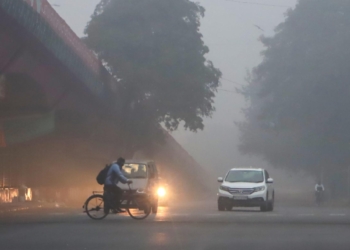New Delhi: Since the formation of the opposition ‘INDIA’ bloc, tensions began to surface among its constituent parties. Just as the alliance started to take shape, JD(U) leader and Bihar Chief Minister Nitish Kumar distanced himself and aligned with the NDA ahead of the 2024 general elections.
Disputes over seat-sharing within the INDIA bloc grew more intense ahead of Lok Sabha polls. In West Bengal, Mamata Banerjee denied seats to Congress and Left parties like CPI-M and CPI. In Delhi, the Aam Aadmi Party (AAP) allocated seats to Congress, while in Punjab, AAP and Congress were unable to reach a seat-sharing agreement. In Uttar Pradesh, the Samajwadi Party (SP) and in Bihar, the Rashtriya Janata Dal (RJD) divided seats arbitrarily, leaving Congress with a smaller share than it had hoped for.
With the NDA government’s return in this year’s Lok Sabha elections, infighting within the INDIA bloc persisted. In the subsequent state Assembly elections, signs of fragmentation within the alliance became evident. In several states, regional parties refused to offer seats to Congress, and in states like Haryana, attempts to form a coalition between Congress, AAP, and SP failed to materialise.
AAP even announced that it would contest the Delhi Assembly elections independently. In the bypolls in Uttar Pradesh, Congress had to accept the seats allocated to them by the Samajwadi Party (SP).
Now, questions are being raised about the leadership of the INDIA bloc, particularly after Congress’ performance under Rahul Gandhi in the Maharashtra and Haryana elections. Leaders from Mamata Banerjee’s TMC, following the Maharashtra results, and AAP leaders after the Haryana results, have suggested that Congress engage in some self-reflection.
While opposition parties came together to keep the BJP out of power, leadership ambitions began to surface. As a national party, Congress was expected to lead, with Rahul Gandhi positioned as the face of the alliance. However, behind closed doors, many alliance members are blaming Rahul Gandhi’s leadership for the alliance’s shortcomings.
In the backdrop of Congress’ failure to defeat the BJP in several elections, West Bengal CM Mamata Banerjee expressed her desire to lead the INDIA bloc in an interview on Friday, a statement that quickly drew significant political attention.
Several alliance leaders voiced their support for her and suggested opening discussions on the matter. Shiv Sena (UBT) leader Sanjay Raut even stated that he would visit Mamata in Kolkata to discuss the issue, while Shiv Sena (UBT) MP Priyanka Chaturvedi also backed her statement.
Mamata went further, claiming she had formed the INDIA bloc, a statement that holds partial truth. While it was Nitish Kumar who originally brought together Congress and other parties, Mamata’s claim carries some weight, as Nitish Kumar is no longer part of the alliance. She said, “I formed the INDIA alliance. Now it’s up to those leading it to manage it. If they cannot, what can I do?”
Mamata also stated that, if given leadership, she could ensure the alliance functions smoothly, a sentiment that received support from the Samajwadi Party (SP). SP leaders like Abu Azmi have even expressed a desire for Akhilesh Yadav to consider exiting the INDIA bloc, with SP leader Uday Pratap also endorsing Mamata’s leadership qualities.
Earlier, CPI had voiced dissatisfaction with Congress’ handling of the alliance. The root cause of this discontent lies in the fact that Congress’ influence has waned within the opposition, especially as smaller parties have outperformed it in recent elections.
Mamata’s recent comments are being viewed by many political analysts as a potential exit strategy from the alliance. Since Congress is unlikely to accept Mamata as its leader, she could choose to exit, much like Nitish Kumar did.
Mamata’s party also appears to be at odds with Congress in Parliament. While Congress prefers disrupting parliamentary proceedings through protests, TMC leaders favour engaging in debates.
It seems Mamata has realised that Congress is more inclined to contest elections with regional allies in states where it is weak, such as Jammu and Kashmir, Maharashtra, and Jharkhand. However, in states where Congress is strong, like Madhya Pradesh, Rajasthan, Chhattisgarh, Karnataka, Andhra Pradesh, Telangana, Haryana, and Himachal Pradesh, it has been unwilling to involve its allies. Therefore, Mamata appears to have crafted a safe exit plan ahead of the Bengal elections, which may also offer a potential exit strategy for other parties within the INDIA bloc.
















